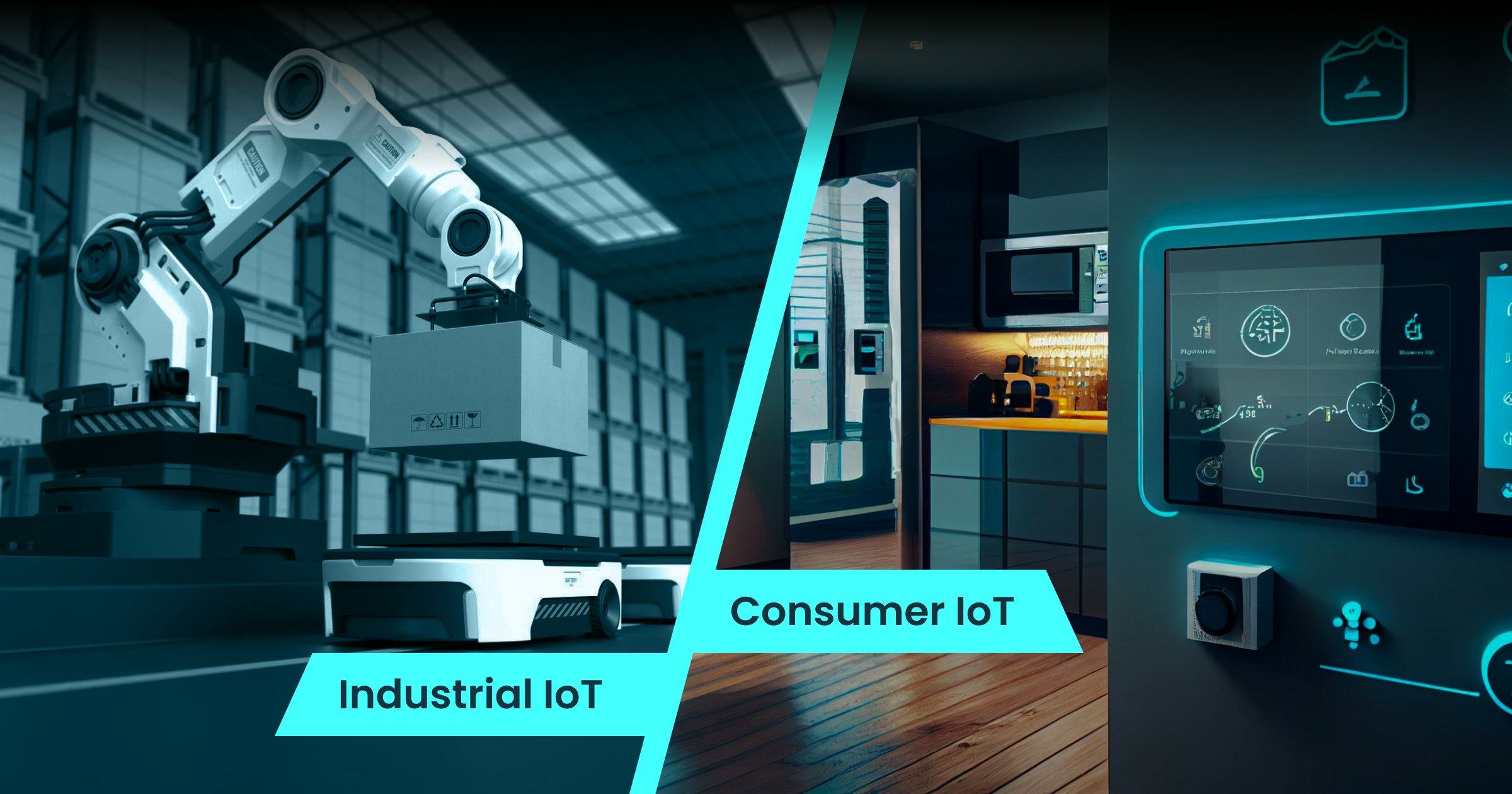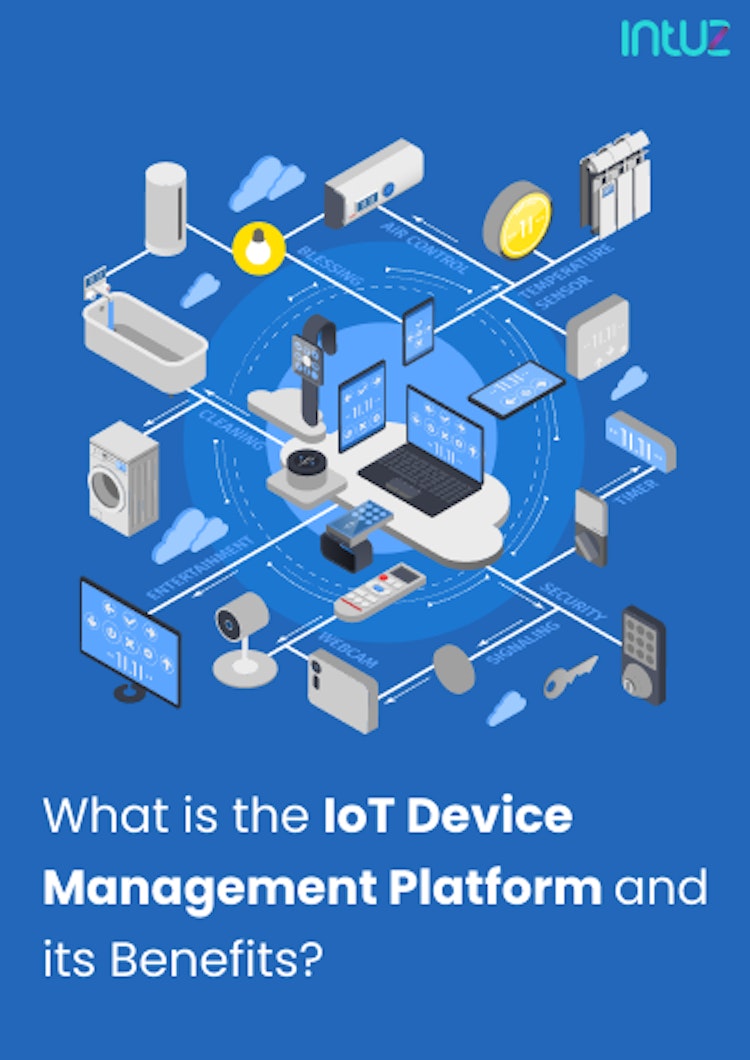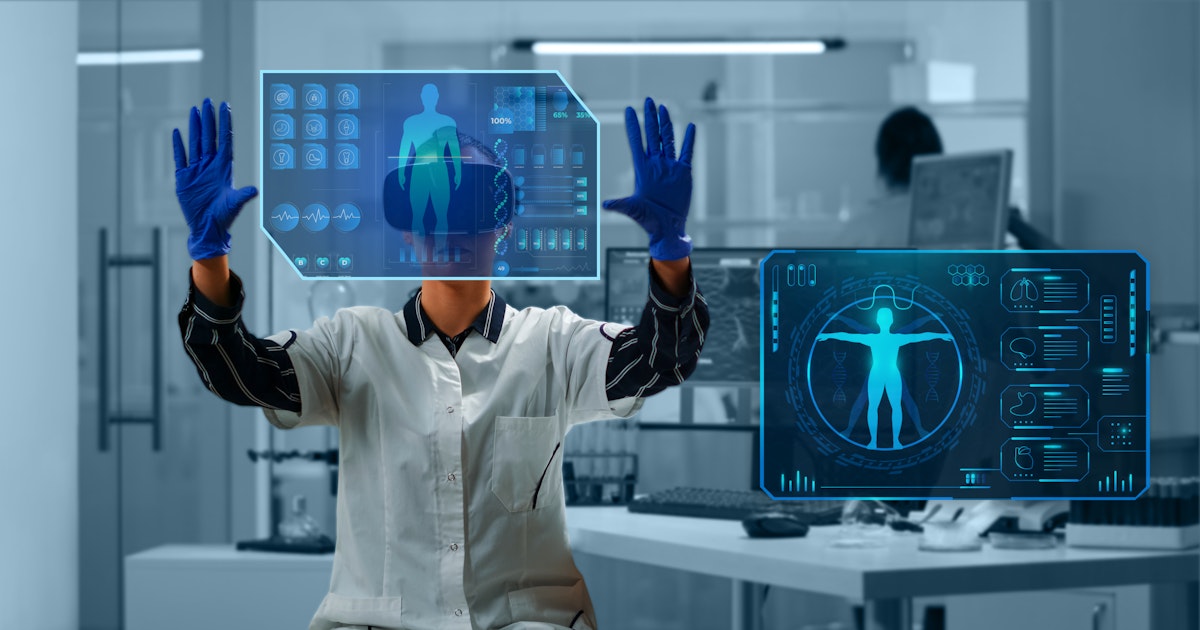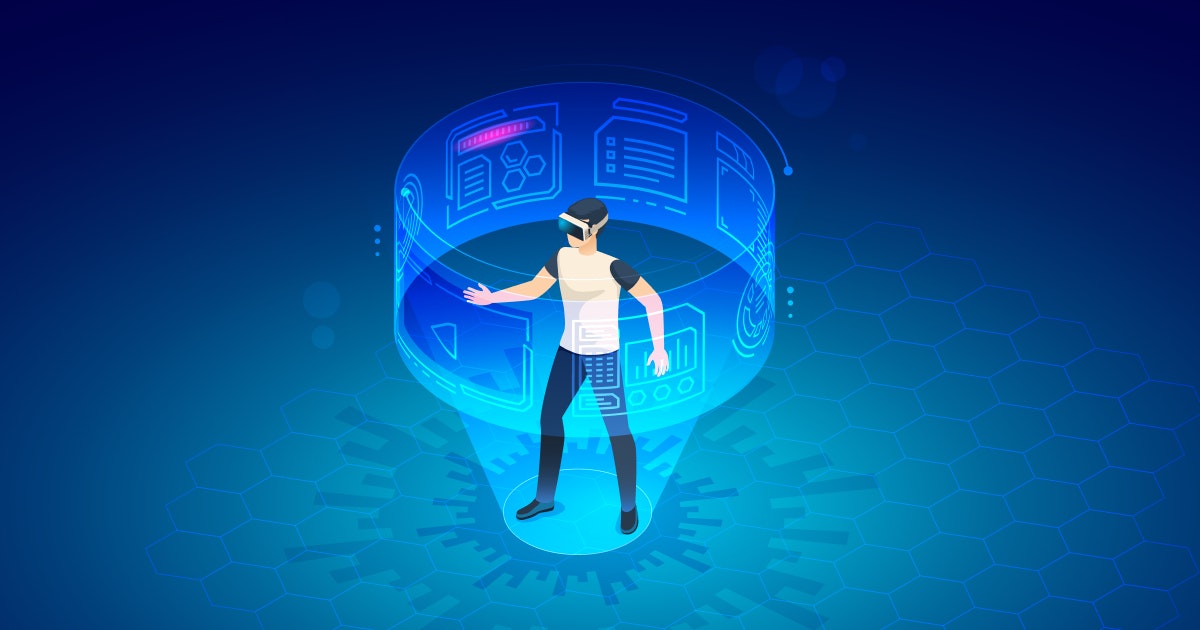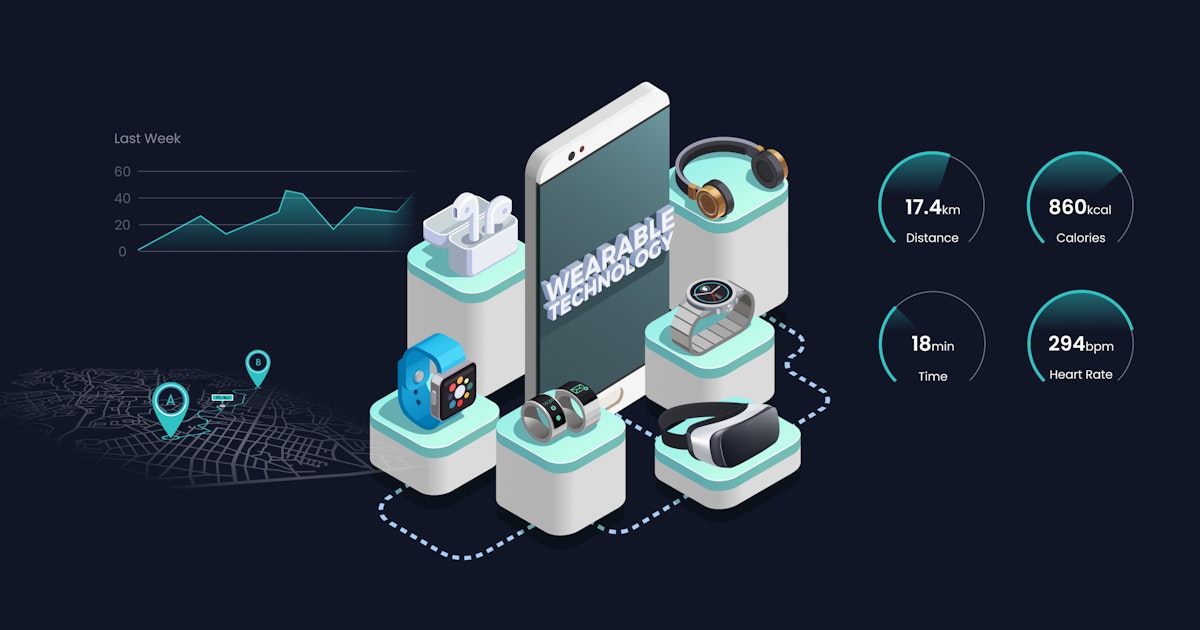There is no denying the sky-rocketing popularity of the Internet of Things or IoT across sectors. More importantly, the technology is now being used at both consumer and industrial level. From healthcare and sports to travel and agriculture, there is not one sector which has not positively impacted businesses and individuals. In this article, we will study the use and cons of IoT for consumers and industries, and also compare the two against each other.
In recent years, the popularity of the Internet of Things has grown by leaps and bounds. Come to think of it, IoT has slowly and steadily captured almost every aspect of our lives — both at an industrial and a consumer-level — across all sectors, including healthcare, logistics, education, fitness, and travel.
Source: MarketWatch
Even the whole concept of deploying millions of various applications within a global network is straight out of a dream, it is a reality we cannot deny. Imagine a scenario where you have a steaming pot of freshly brewed coffee waiting for you as soon as you wake up in the morning.
Transform Your Products with Custom Advanced IoT Integration Solutions!
Talk to IoT ExpertsImagine if there were sensors in your house that sent signals to the coffee machine regarding when you switched off the alarm, got out of the bed, and went to the bathroom to freshen up. In this day and age, this is all very possible.
With more use of connected devices at all levels, the global market for IoT is estimated to reach 1.6 trillion by 2025. More importantly, IoT applications are transforming tasks from an industrial to an individual level.
They support the functioning of manufacturing, defense, utilities, agriculture, and several other industries quite radically. But more on that later.
Understanding device connectivity and interoperability
The term "interoperability" refers to the ability of two or more devices, systems, or networks to work in conjunction with each other. In other words, it enables the communication between heterogeneous devices to achieve a common goal.
The performance of IoT devices is based on the safe, secure, and effective exchange of information. Communication happens among one or more devices using advanced technologies. For instance, an air conditioner may be activated by a smartphone, or an HVAC system at a manufacturing unit may be controlled remotely through a microcontroller.
However, the current devices are divided based on communication technologies, data formats, and protocols. The dissimilarity makes it difficult for the devices to communicate and share data with one another.
Both the air conditioner and HVAC are being used in different environments or settings. The core of the technology is the same, but every IoT app has diverse requirements and implications. The difference of applications can be understood broadly as two types of IoT — IIoT and CIoT.
Industrial IoT or IIoT
It is the industrial application of technology to optimize business operations and improve efficiency in different sectors such as medicine and automotive.
It involves a network of data-generating sensors connected to a Programmable Logic Controller (PLC) and further processing of the data using cloud-based solutions. The proprietary information is used to optimize operations and mitigate risks.
The IIoT ecosystem is transforming businesses effectively as they comfortably advance into Industry 4.0. IIoT involves implementing IoT technologies such as machine-to-machine (M2M) communication, big data, and machine learning at a large scale.
Features
1. Resistance to extreme environments
IIoT sensors can withstand extreme environmental conditions. They can be exposed to high temperatures, submerged within fluids, and encounter high-pressure situations with ease.
IIoT sensors must be able to meet industry standards of waterproofing set by the IP68 certification. Those exposed to explosive and combustible environments must be HazLoc-certified to be eligible for deployment.
2. Wide device range
Complex monitoring systems are deployed over an extensive area. It may range from a few to over hundreds of kilometers.
The complex network may comprise various midpoints and endpoints. Each device on the network generates data that is to be transmitted to industrial control systems (ICS) such as a PLC, SCADA (supervisory control and data acquisition), and Distributed Control Systems (DCS).
IIoT manufacturers use Edge Computing to devise hardware capable of conducting preliminary analytics. The initial data processing is handled at the device level to avoid overloading the ICS.
3. Maximum communication
IIoT sensors are used to replace human intervention in high-risk zones. They may be deployed at remote locations where it is otherwise difficult to access infrastructure.
The positioning may range from below the surface at oil and gas facilities, atop high-water reservoirs, inside boilers, to offshore at oil wells.
IIoT devices installed at these difficult-to-physically-access locations are engineered to maximize communication while minimizing power consumption. They are equipped with industrial-grade batteries for prolonged battery life.
Network families such as LPWAN (Low-Power Wide-Area Network) and NB-IoT (Narrow Band-Internet of Things) enable IIoT devices to operate on low-power and low bandwidth.
IIoT devices are mostly remotely controlled because of the limited accessibility of the terrain by a human operator. They have minimal response time and built-in watchdog timers as they are responsible for performing critical activities.
Most systems are capable of automatically rebooting and rectifying a system hang. This is a boon for sectors such as manufacturing, where human intervention is not always possible.
4. Higher cybersecurity standards
Industrial setups have more demanding cybersecurity requirements. Hardware installations must meet the highest cybersecurity protocol as the repercussions of an attack on an industrial IoT network are severe.
5. Granular customization
IIoT solutions need to be tailored to meet the specific usage requirements of the purchaser. To meet this demand, IIoT providers make use of APIs or Platform as a Service (PaaS) offerings. That way, IoTs can be personalized to meet specific end goals relatively easily.
Use cases
The following examples of IIoT will give you an insight into its capabilities across sectors:
1. Caterpillar reaps benefits of their IIoT investments
Caterpillar is one of the first investors of IoT technology. The company uses IoT and Augmented Reality (AR) applications to enable remote monitoring and maintenance of construction equipment and mining machinery. They have saved significant amounts of money through their intelligence-driven asset management and sensor-based data analytics initiatives.
2. Amazon reinvents its warehouses through human-machine collaboration
Amazon has deployed armies of Wi-Fi-connected Kiva robots for automating their warehouses. They work alongside the company's human workforce to enhance productivity and get things done more efficiently. The eCommerce giant claims to have cut down operating costs by 20%.
3. Bosch innovates tracking and tracing functions through the use of sensors
In 2015, Bosch launched a "Track and Trace" program to reduce the time workers spend hunting down tools. They added sensors to all their tools to enable easy tracking of the equipment used at the manufacturing units.
4. ABB Robotics gains industrial remote access by connected devices
Robotics and power firm ABB integrates connected sensors in robots to monitor its predictive maintenance initiatives. They address maintenance needs across five continents. The company's YuMi model works on the collaborative robotics model to empower robots to work alongside humans, which has saved the company a lot of time and money.
Drawbacks
- Manufacturing units and factories might need to remove serviceable legacy systems to achieve IIoT benefits if they are not compatible with modern technology.
- Not every manufacturing company would have a huge budget. Integrating IoT technologies can be an enormous investment for many if no proper research has been done regarding the benefits they bring to the table.
Consumer Internet of Things or CIoT
It refers to the network of physical and digital objects, such as smartphones, fashion items, wearables, and so on, interconnected for use by a consumer. These devices run on multiple wireless technologies enabled through microcontrollers and Unique Identifiers or UIDs.
CIoT is known for rapidly penetrating our regular lives to increase efficiency and provide ease to everyday functions. It is the technology that we see in our day-to-day lives.
Features
- The rise of connected devices demands faster, cheaper, and more secure hardware and software solutions. IoT devices employ built-in sensors and communicate through Bluetooth, RFID, GPS, NFC, and the internet to capture precise consumer data.
- IoT systems such as smartphones are used as controllers of CIoT devices and apps.
- CIoT devices are also leveraging LPWAN for personal asset tracking applications over wide ranges.
- These devices offer consumers complete flexibility of operation from remote locations. Consumers enjoy the convenience and added safety that come with using the devices. They can even control accidents by switching off equipment remotely.
Use cases
The most common CIoT use cases we come across every day are:
- Ralph Lauren's sensor-laden t-shirts have silver fibers woven directly into the fabric that track biometric statistics like heart rate, breathing depth, steps taken, and energy exertion. They are expensive and cost around $295 per shirt
- Hearables or Smart Earbuds such as AirPods and Google Pixel Buds, and Smart Watches such as Apple Watch or Fitbit have been in business for a long time and are a hot favorite among millennials and GenZ alike.
- Voice Assistants such as Amazon Echo and Google Home smart voice-activated speakers are a staple in many households worldwide.
- The likes of Bitdefender BOX offer a new and effective way to secure your connected home. It delivers easy to use protection service for all devices.
Drawbacks
- The majority of consumer IoT devices rely on continuous power or internet connectivity to function without any disruption. Without the internet, these systems would come to a grinding halt. Same with wearables like Fitbit that need to be recharged periodically.
- Data concern will always remain a huge concern in IoT, even at a consumer level. Although information privacy laws are coming into effect worldwide, we still have a long way to ensure consumer data is not used for any malicious purposes and is safeguarded at all times. That is a challenge currently.
Misconceptions about IIOT and CIOT
- IIoT and CIoT both operate on IoT technology, but the implementation at industrial levels requires more capabilities compared to a consumer application.
Both the technologies require precise control, high-grade security, and reliable performance under extreme conditions. We need to strive to reduce the need for human intervention and must operate on minimal power. - Industrial operations demand more than "push and pull status and command information." IIoT must enable autonomous devices to operate more effectively and efficiently amongst themselves.
Unlike CIoT, the industrial communities of devices have been established for specific types of industrial devices. These devices may be incompatible with one another but perform interdependent functions.
In such a scenario, Internet Protocol (IP) serves as a unifying communications pathway to improve peer-to-peer communications. - CIoT scenarios involve digital devices with built-in IP capability. IIoT legacy devices do not offer IP enablement, and most industrial device owners cannot drive economic benefit from enabling it.
Alternatively, they are constantly looking for ways to benefit from IP without stranding their existing valuable industrial assets. It is thus advisable to allow industrial devices to connect among themselves for improved peer-to-peer operation.
The small data generated by industrial devices would then contribute to an expanse of big data of the IoT technology rather comfortably.
Industrial IoT vs. Consumer IoT: A comparative analysis
Enterprise-Class Top IoT Development Company
Explore solutionsOver to you
Industrial and Consumer IoTs may run on the same concept of connecting physical devices and transmitting data over a network, but they are significantly different in their requirements and applications.
The main differences are in the types of hardware devices involved and the security, connectivity, and power requirements of these devices.
The real opportunity lies in identifying requirements according to the use cases. Industrial IoT device manufacturers must offer affordable products to ease the migration path to IP.
Similarly, CIoT devices must be equipped with better security features. Approaching both forms of IoT with specific solutions will help build bridges among them.
That will enable any community of devices to seamlessly connect with broader networks and achieve the application's full potential. Are you looking to get an IoT platform designed? Your search is over. Speak to Intuz experts today!
